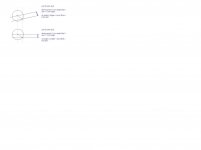Dave ive been reading and watching this thread, and ive got a question/observation. IF i understand it all well, this shouldnt be a stupid question.
ITs about cue-elevation (i know you still have to analyse this in more depth) but it might be something to put on the list of goals.
If you bridgehand with closed bridge is at the hight (compared to the slate) of 1ball diameter - (1/2 of shaft diameter). AKA the exact hight to hit centerball.
If now you aim with the same bridge to the 80% limit, you get the best powerdraw according to the plots.
Now is it safe to say:
That the speed the cb will travel to the ob, depends on the angle between the centerline of the shaft and the horizontal line true the CB absolute center(as the movement is horizontal)
The bigger the angle , the slower the CB will travel, the more lag, the less draw you get.
Now if you use a openbridge, flatten your hand, so that the hight of the bridgehand is only 0.5". If you hit the cb at the exact same place as with the closed bridge, the angle i described before is smaller.
Smaller angle, means faster cb, means less drag, means more spin.
So for powerdraw shots, i think that using a flat open bridge helps on powerdraw
Now i know that elevating the cue gives more spin. Apart from the jumping, i think the main reason why you get more spin, is because your increase the tip offset, even though you are hitting the same offset. sounds weird, but itsnt. The bigger tipofset, gives more spin.
elevating the cue's impact on CB jumping.
Jump distance = influenced by speed and angle its stroked.
elevated cue + closed bridge = Big angle + low speed (cfr post before, where bigger angle reduces speed)
Elevated cue + open bridge = smaller angle + higher speed.
Now wich of the two is the best?
Its the open bridge, as the max height the cb gets is lower, the energy lost on impact is lower (gravitation is dependend on height...)
So for each shot= the perfect combination of ofset and speed changes as the plots show, but on general rule, a open bridge gives you more draw if you are able to controle the cb as well as with a closed bridge.
brbr gonna make some quick drawings to clear the things up :embarrassed2: i dont think anyone got what i wanted to explain... grmbl
edit 1 : in short: you havent put the hight of the griphand in all the math, where it is an important given. I supose on all the callculations you used the center of the cue at griphand exactly as high as the mass centre of the cb right?

